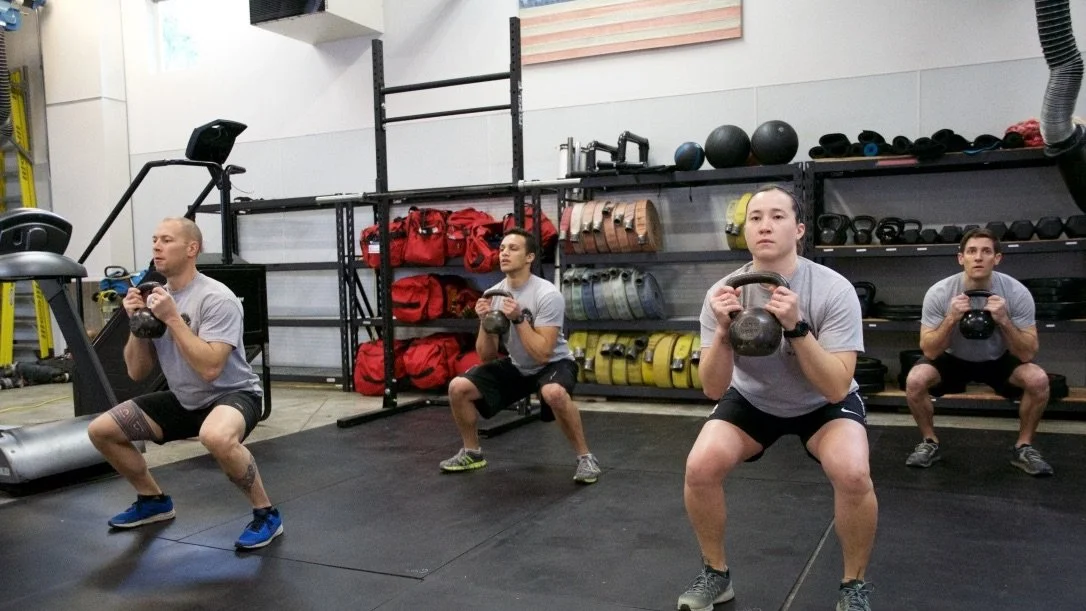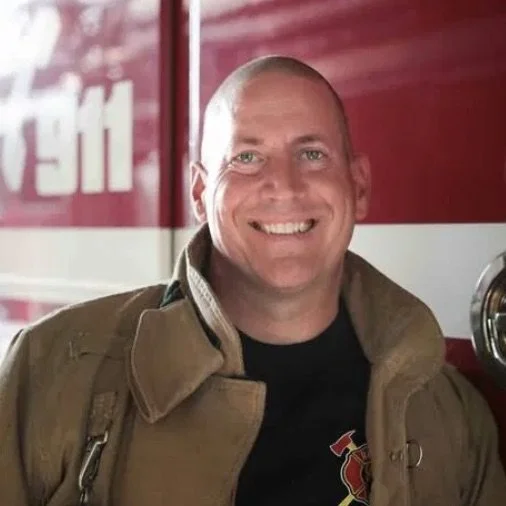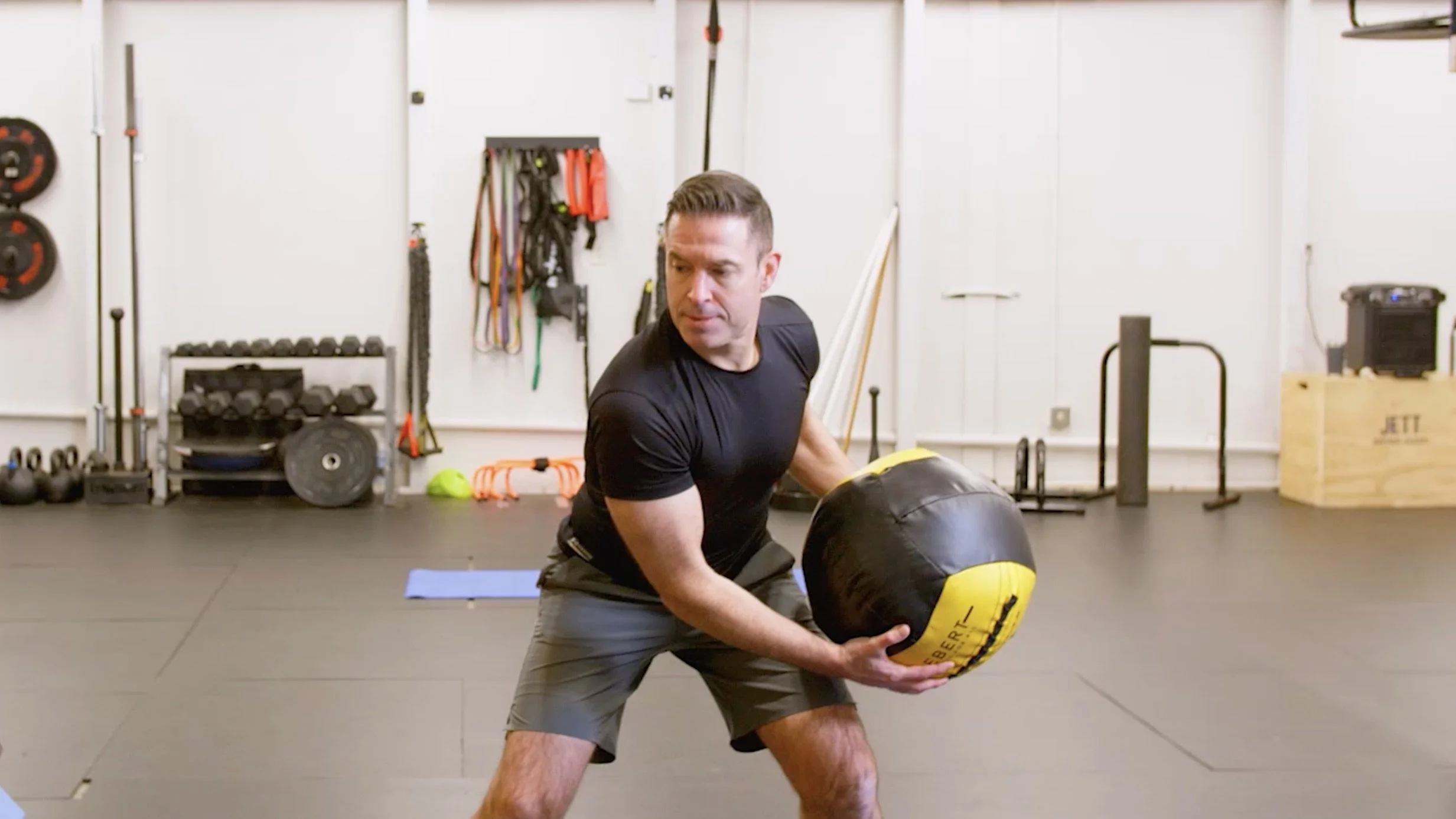Are You Ready for the CRACKYL Magazine “28-Day Firefighter Tactical Fitness Challenge”?
By Ryan Provencher
The fire service isn’t just a job; it’s a calling. Let’s answer it together—not just for the community we serve but for the community we are.
Brothers and Sisters,
As firefighters, we face physical, mental, and emotional demands that few can comprehend. Every day, we put ourselves on the line, but are we truly prepared to perform at our best and protect our long-term health?
If your answer isn’t a confident “yes,” We invite you to join the “CRACKYL Magazine 28-Day Firefighter Tactical Fitness Challenge” for February. This challenge is designed for all firefighters, no matter your current fitness level, to help you perform at your best when it matters most.
This is more than just a workout program—it's a comprehensive training program built to improve your work capacity and reduce the risk of injury. You'll also refine your nutrition to fuel your body for the demands of the job while improving body composition and energy levels.
This program is about progress, not perfection, and it sets the foundation for peak performance and resilience in 2025.
This is your opportunity to hit the reset button, connect with like-minded firefighters, and make progress that matters. Whether you’re looking to boost your fitness, clean up your nutrition, or simply prove to yourself that you can do it, this challenge is for you.
Optimize your fitness and nutrition, improve your firefighter performance, Be Response Ready!
We’ll be with you, every step of the way.
Are you in?
Firefighter Tactical Fitness Challenge Overview
The Firefighter Tactical Fitness Challenge has four key components:
Nutrition: Just as athletes rely on proper nutrition to perform at their best, we must fuel our bodies to meet the physical and mental demands of the job. Nutrition is key to maintaining energy, supporting muscle recovery, boosting immunity, and enhancing overall performance.
Exercise: Firefighter Tactical Fitness is specialized training designed to build capacity for work in training and emergency response, with a focus on reducing injury risk and optimizing recovery. This “job-specific” training ensures you will “Be Response Ready” when the call comes in.
Tracking: The Firefighter Peak Performance N.E.T. System (Nutrition, Exercise, Tracking) is a simple approach to the “80/20 Rule” for firefighter fitness. This system provides a structured and actionable framework to enhance your accountability and performance in alignment with the firefighter-athlete lifestyle.
Commitment: Each day, your goal is to fuel your body with high-quality nutrition and fire up your fitness with deliberate, focused training. By embracing this system, you’ll build resilience, optimize performance, and reduce the risk of injury while setting a strong foundation for long-term health.
What You’ll Get:
A 4-Week Firefighter Tactical Fitness Program featuring daily workouts, exercise instruction, workout timers, score sheets, to support steady progress in your training.
A Basic Nutrition Plan designed to fuel performance and recovery.
Personal Coaching to help you customize this program to meet your specific needs and goals. I am here to support you every step of the way.
A Supportive Community where you can share your progress and work through challenges.
Firefighters in Our Programs Have Experienced:
Improved Performance in the gym and on the job.
Better Recovery from the demands of firefighting and shift work.
Reduced Risk of Injury with a more mindful approach to movement.
Improved Body Composition through consistent exercise and healthy nutrition.
Challenge participants that average a N.E.T. Score of 8 or above for the 28-Day Challenge will be entered into the raffle to win CRACKYL Prizes!
Your 28-Day Firefighter Tactical Fitness Program
Just as an “Incident Action Plan” (IAP) guides emergency operations, your “Fitness Action Plan” (FAP) will serve as a framework to enhance firefighter readiness, optimize performance, and reduce the risk of injury. Here is an overview of your Firefighter Tactical Fitness Program:
Size-Up: You will complete your “Firefighter Tactical Fitness Assessment” in Week 1 to establish your tactical fitness baseline. We encourage you to set specific goals based on your performance. You will retest in Week 4 to evaluate your progress in the Program.
Strategy: This 4-Week Tactical Fitness Program is designed to improve strength, conditioning, and movement quality with an emphasis on reduced injury risk and recovery. The training schedule is flexible to support your personal goals and to account for the stress of firefighting and shift work.
Tactics: You will complete efficient and effective Workouts each day that utilize low, moderate, and high-intensity interval training. Each training day has a specific goal, and you’ll monitor progress using objective and subjective scoring metrics.
Tasks: The Training Exercises are based on movement patterns with a tactical application to firefighting. Each movement is loaded with Simple Tools to simulate real-world tasks. Training exercises are paired with dynamic mobility warm-ups and flexibility recovery cool-downs.
After Action Reports: Your Intentional Training and Scoring Metrics track performance in each workout, helping to translate gym progress into on-the-job performance. Scoring the workout is part of the workout when we refer to intentional physical training. Both subjective and objective metrics are used to ensure a comprehensive evaluation of your progress each week.
Auto-Regulation: You are encouraged to manage the intensity of your workouts based on how you feel each day. For example, you might choose a low-intensity training day over a moderate or high-intensity day if you are experiencing fatigue, stress, or poor recovery. You will also learn to manage the intensity of your exercise by increasing or decreasing load and tempo based on fatigue and your ability to maintain movement quality.
Intentional vs. Arbitrary Training: In Fire Department Incident Safety Officer, Dave Dodson distinguishes “Arbitrary Aggressiveness” from “Intellectual Aggressiveness” in firefighting operations. Arbitrary refers to decisions based on random choice or whim, while intellectual aggressiveness recognizes predictable dangers and mitigates risk. This principle applies directly to firefighter fitness and wellness, where our approach is intentional, not random, and focused on preparing firefighters to meet the physical and mental demands of the job.
Your Basic Nutrition Guide
As firefighters, we need to be at our best—whether it’s on the fireground or in the gym. A solid foundation of good nutrition is key to performing at a high level, recovering quickly, and staying resilient over the long haul. These simple strategies will help you perform at your best in the gym and on the job:
Build Your Meal Plan Around Whole Foods: A healthy diet starts with whole foods, which are unprocessed and retain natural nutrients. These include fresh fruits, vegetables, meats, dairy, eggs, and whole grains. Shopping the outer aisles of the grocery store is a helpful strategy. Avoid additives, sugars, and chemicals for cleaner, more nutritious eating habits.
Ensure Adequate High-Quality Protein: Protein is essential for muscle repair and growth. High-quality sources like meat, dairy, eggs, and fish provide all essential amino acids. For plant-based diets, combine protein sources like beans, lentils, tofu, and quinoa to meet amino acid needs.
Eat the Rainbow: A variety of colorful fruits and vegetables delivers a broad range of vitamins, minerals, and antioxidants. These nutrients support overall health, reduce inflammation, and lower the risk of chronic diseases, which are concerns for firefighters due to job stress and exposure.
Reduce Sugar Intake: Excess sugar contributes to obesity, diabetes, and heart disease. Hidden sugars in foods like granola bars and fruit juices can derail a balanced diet. Read labels and aim to minimize sugar consumption.
Limit Alcohol Consumption: Alcohol adds calories, disrupts sleep, and increases cancer and obesity risks. While often used socially, moderation is essential. Consider how alcohol impacts fitness goals and overall health.
Stay Hydrated: Hydration is vital for firefighters facing intense physical exertion and heat. Dehydration impairs cognitive and physical performance and raises heat-related illness risks. Drink water consistently to maintain blood volume, muscle function, and temperature regulation.
Please note that this is a basic nutrition guide. Consult a nutrition professional for additional guidance if you have specific nutritional needs.
Nutrition - Exercise - Tracking System Overview
At the heart of the challenge is the Firefighter Peak Performance N.E.T. System (Nutrition, Exercise, Tracking). This simple yet effective framework is designed to align with your demanding firefighter-athlete lifestyle, using the 80/20 Rule to prioritize habits that deliver maximum results with minimal overwhelm.
How the Challenge Works
Nutrition: Start each day with 6 points. Deduct 1 point for each meal or beverage that deviates from your plan such as processed foods, lack of protein, insufficient fruits/vegetables, high sugar intake, alcohol consumption, and inadequate hydration.
You have flexibility: enjoy one treat or beverage each day, or follow a clean eating plan all week with one intentional “off day” for a special occasion. The goal is to build awareness and make mindful choices daily.
Exercise: Begin with 4 points daily. Complete the “28-Day CRACKYL Tactical Fitness Program” as prescribed. Subtract 4 points for skipping workouts and 2 points for partial workouts.
Adaptation is encouraged: If you’re feeling fatigued, stressed, or not fully recovered, substitute with a lower-intensity workout or active recovery session. The goal is consistency, not perfection.
Tracking: Log your daily scores for nutrition and exercise. Track your progress across four 7-day training cycles and strive to maintain an average score of 8 or higher for optimal success in the program.
Why the 80/20 Rule?
The 80/20 Rule, or Pareto Principle, states that roughly 80% of outcomes result from 20% of efforts. Applied to fitness and nutrition, this means that focusing on a few key behaviors can drive the majority of your results. No need for perfection—consistency is what counts. For firefighters, whose schedules are anything but predictable, the 80/20 Rule is a game-changer. It provides structure while allowing for the occasional indulgence or missed workout without derailing your progress.
Benefits of following the 80/20 Rule include:
Sustainability: By prioritizing key habits, you create a realistic and long-term approach to health.
Flexibility: Life happens, especially in the fire service. The 80/20 Rule allows you to recover quickly when setbacks occur.
Reduced Stress: No more feeling guilty for enjoying a treat or missing a workout—focus on the big picture.
Improved Performance: Consistently focusing on high-impact habits leads to better energy, strength, and endurance on and off the job.
By embracing the 80/20 Rule, this challenge provides a practical, sustainable framework for improving fitness and nutrition without demanding perfection. The focus on consistency, flexibility, and mindful choices ensures long-term success and optimal performance, even in the unpredictable life of a firefighter.
Frequently Asked Questions
Is 4 weeks enough time to see progress?
Absolutely! While long-term improvements require consistent effort, 4 weeks is enough to notice gains in body composition, strength, endurance, mobility, and overall fitness. It’s also an ideal timeframe to build healthier habits.
How is this program designed to meet the unique demands of firefighting?
This Firefighter Tactical Fitness Program isn’t your typical “Conventional Fitness” or even “Functional Fitness” program. It’s designed specifically to prepare you for the physical and mental demands of training, emergency response, and long shifts at the firehouse. The workouts focus on building strength, endurance, and mobility while reducing your risk of injury and promoting faster recovery. This job-specific approach helps to ensure that you will “Be Response Ready” when the call comes in.
I see a workout planned for each day of the month. Is there flexibility in how I approach my training schedule?
Yes! While the plan provides structure, you can adjust the training schedule based on your current fitness level, personal goals, shift schedule, energy levels, and recovery needs.
What do I do if I don’t have the specific tools called for in a workout, or if I struggle with a specific exercise?
Each exercise in the program has various loading options and exercise alternatives to ensure easy access to the training. We could help you come up with a bodyweight-only version of this program if equipment access is a hindrance to participation.
How long do the workouts take to complete?
Most workouts take 30–45 minutes, making them efficient and easy to fit into a busy firefighter’s schedule.
Can I scale the workouts to make them more or less challenging?
Yes, the program includes options to increase or decrease intensity by adjusting load, tempo, or volume based on your fitness level.
Are You Ready to Step Up to the Challenge?
This is more than a fitness program—it’s a movement to help firefighters like you take control of your health, optimize your performance, and build a foundation for resilience in 2025 and beyond.
Don’t let another year pass by without investing in yourself. You owe it to your crew, your community, your family, and, most importantly, yourself. Join the CRACKYL Magazine 28-Day Firefighter Tactical Fitness Challenge today.
Together, let’s be stronger, fitter, and more resilient. Let’s Be Response Ready.
Ryan Provencher is an Operations Battalion Chief with over 30 of Fire Service experience. He holds a Bachelor of Science in Kinesiology and Exercise Science with a Minor in Nutrition from Washington State University. He has extensive experience as a Fire Department Peer Fitness Trainer and Health/Fitness Coordinator, he is the founder of Firefighter Peak Performance and serves as Executive Fitness Advisor for CRACKYL Magazine.






